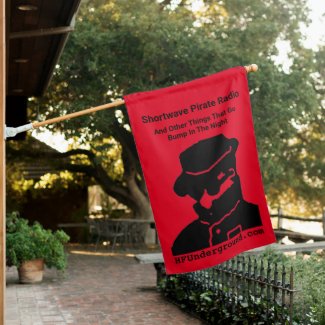1
The RF Workbench / Re: U-LULU (Updated LULU) for 48 meters, 20 Watt Class-E AM Transmitter
« on: February 21, 2024, 2232 UTC »
I've done a little more to the U-LULU. I tried a few other FETs with varying degrees of success. I've included my own design of power supply sequencing (based on a bit of simple CMOS logic). With some work, I got efficiency up to around 92% with tuning that's open enough to allow it to go anywhere from 6.25 - 6.45 MHz without much change in power output. The carrier cleanliness is also now up to commercial standards, since I decided to extend the output LPF by an extra section. Just for the sake of amusement (and with a nod towards possible automatic mod depth adjustment) I introduced envelope feedback to the modulator. The audio distortion that I previously had on the unmodified version has completely disappeared (it was previously in the order of 9% at peak mod). Measurements now show the distortion to be well below 0.2%, and I've been able to add some audio response shaping to make it sound a bit "nicer" (according to my wife!).
I also built a couple of these things for MW (1.2 - 1.4 MHz) with really good results. They run virtually cold, provide really good harmonic cleanliness, and have really good sounding modulation.
We've made a few of the early 6.3 MHz versions and they've been snapped up by our Eastern European friends (as predicted). Perhaps the English commercial constructor earlier in this thread has upset potential Eastern European clients, because we've had a lot of expressions of interest from over there - for both versions (SW and MW). The enhanced version - with automatic modulation level control (a three-band audio processor), a built-in MP3 player and a "Universal Input" SMPSU to power it up looks like it should be particularly popular, and I may well make the details available on here for everyone to use. We have also shipped a couple to South America, and received good reports.
It was quite fun to hear one of my hand-built early prototypes - being run in southern Spain - up here at home in the Benelux at New Year! That one produces ~26 W carrier / ~102 W PEP, and uses one of those "ProgRock" synthesiser modules.
We don't intend these to ever be a commercial product, but we're in touch with many clandestine SW operators, and we'll be sure to supply a few of them to interested parties.
In closing, I'd like to thank CDS for his efforts in improving the basic LULU. The original was a pretty clever idea despite its flaws, and the CDS improvements made it into a great little transmitter. There's a whole lot more that can be done to these little beasts, and - when I find the time - I'll be doing some additional design work.
I also built a couple of these things for MW (1.2 - 1.4 MHz) with really good results. They run virtually cold, provide really good harmonic cleanliness, and have really good sounding modulation.
We've made a few of the early 6.3 MHz versions and they've been snapped up by our Eastern European friends (as predicted). Perhaps the English commercial constructor earlier in this thread has upset potential Eastern European clients, because we've had a lot of expressions of interest from over there - for both versions (SW and MW). The enhanced version - with automatic modulation level control (a three-band audio processor), a built-in MP3 player and a "Universal Input" SMPSU to power it up looks like it should be particularly popular, and I may well make the details available on here for everyone to use. We have also shipped a couple to South America, and received good reports.
It was quite fun to hear one of my hand-built early prototypes - being run in southern Spain - up here at home in the Benelux at New Year! That one produces ~26 W carrier / ~102 W PEP, and uses one of those "ProgRock" synthesiser modules.
We don't intend these to ever be a commercial product, but we're in touch with many clandestine SW operators, and we'll be sure to supply a few of them to interested parties.
In closing, I'd like to thank CDS for his efforts in improving the basic LULU. The original was a pretty clever idea despite its flaws, and the CDS improvements made it into a great little transmitter. There's a whole lot more that can be done to these little beasts, and - when I find the time - I'll be doing some additional design work.


